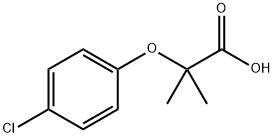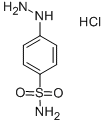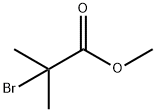2-(4-Chlorophenoxy)isobutyricAcid , 10mMinDMSO , 882-09-7
Synonym(s):
α-(p-Chlorophenoxy)isobutyric acid;2-(p-Chlorophenoxy)-2-methylpropionic acid;Clofibric acid
CAS NO.:882-09-7
Empirical Formula: C10H11ClO3
Molecular Weight: 214.65
MDL number: MFCD00004192
EINECS: 212-925-9
| Pack Size | Price | Stock | Quantity |
| 1ml | RMB159.20 | In Stock |
|
| others | Enquire |
PRODUCT Properties
| Melting point: | 120-122 °C(lit.) |
| Boiling point: | 308.11°C (rough estimate) |
| Density | 1.2413 (rough estimate) |
| refractive index | 1.5220 (estimate) |
| storage temp. | Sealed in dry,Room Temperature |
| solubility | Chloroform, Methanol |
| pka | 3.18±0.10(Predicted) |
| form | Crystals or Crystalline Powder |
| color | Pale yellow to brownish |
| Merck | 14,2378 |
| BRN | 1874067 |
| CAS DataBase Reference | 882-09-7(CAS DataBase Reference) |
| NIST Chemistry Reference | Clofibric acid(882-09-7) |
| EPA Substance Registry System | Propanoic acid, 2-(4-chlorophenoxy)-2-methyl- (882-09-7) |
Description and Uses
Clofibric acid is a peroxisome proliferator-activated receptor α (PPARα) agonist (EC50 = 50 μM in a transactivation assay) and the active metabolite of clofibrate . It is formed from clofibrate by tissue and serum esterases. Dietary administration of clofibric acid (0.067-0.22%) reduces serum cholesterol, phospholipid, and triglyceride levels in rats. It decreases glutamate oxaloacetate transaminase (GOT) levels and increases glutamate pyruvate transaminase (GPT) and lactate dehydrogenase (LDH) levels, markers of xenobiotic stress, in the plasma of carp (C. carpio) when administered in tank water at a concentration of 10 μg/L. Clofibric acid has been found in wastewater effluent.
Antilipemic.
Safety
| Symbol(GHS) |  GHS07 |
| Signal word | Warning |
| Hazard statements | H302 |
| Precautionary statements | P264-P270-P301+P312+P330-P501 |
| Hazard Codes | Xn,Xi |
| Risk Statements | 22-20/21/22 |
| Safety Statements | 36-24/25 |
| WGK Germany | 3 |
| RTECS | UE9455000 |
| HazardClass | IRRITANT |
| HS Code | 29189900 |






